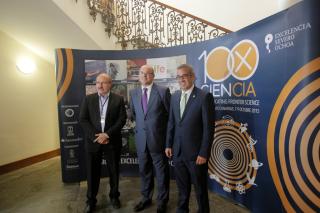Antonio Calvo Roy is the President of the Spanish Association of Science Communication (AECC) and strongly supports the professionalization of science outreach, as indeed he must. He insists on the importance of support for science among communicators, and in the need for specialized journalists, both in the editorial offices of the media and in the press offices of scientific institutions. Calvo Roy will be a member of one of the panels during the meeting “100Xciencia” which will take place between 7th and 9th October in La Palma.
Advertised on
